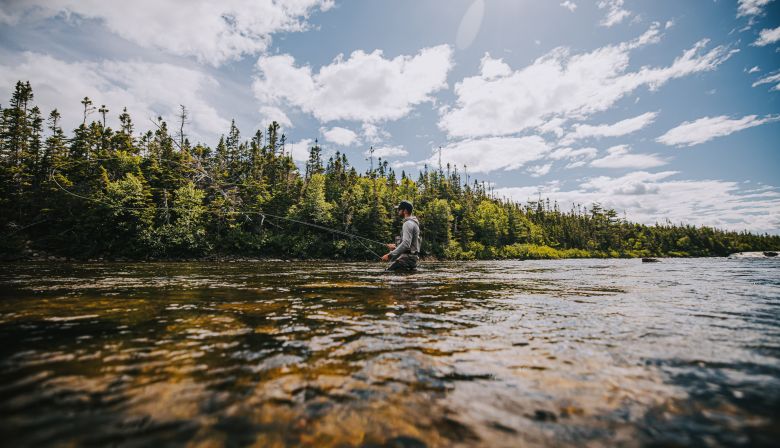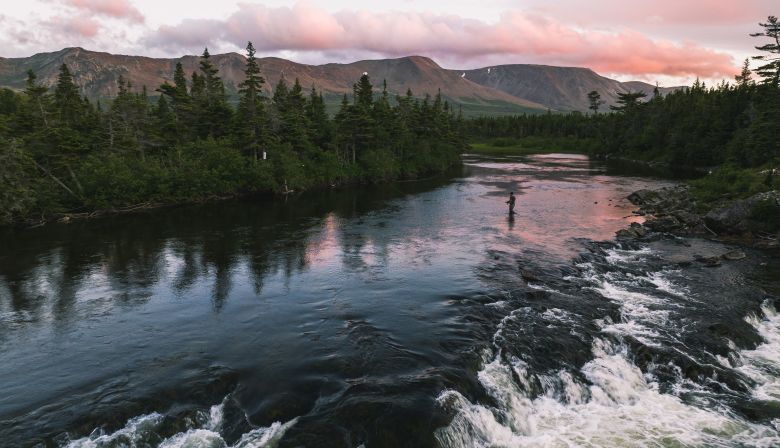
Subscribe & stay up-to-date with ASF


River restoration crews, however are hard at it, making the most of the low water conditions to complete assessments and field work. These passionate conservationists spend gruelling days in the sun working on behalf of Atlantic salmon and the rivers they call home. We encourage our members to reach out to volunteer with river groups where they can — many hands make light work!
ASF’s Maine Headwaters Project Manager, Maranda Nemeth shares:
The Walton’s Mill Dam is nearly removed from Temple Stream restoring passage to over 54 miles of critical cold-water habitat in the headwaters of the Kennebec River. Temple Stream is flowing freely for the first time in over 240 years. The demolition progressed smoothly over the past 2 weeks and the next phase includes removal of the stream bank abutment structures and restoring the floodplain.
To view the progress and see the project unfold, click HERE.
This project is only successful through partnership with Town of Farmington, NOAA Restoration Center, U.S. Fish and Wildlife Service, Maine Department of Marine Resources, Maine Department of Environmental Protection, Farmington Water Department, the Land and Water Conservation Fund, and Maine Outdoor Heritage Fund. Funding support has also been provided by the Maine Natural Resources Conservation Program, Trout & Salmon Foundation, Cascade Foundation, and several other private foundations.
To learn more about the history of ASF’s restoration work on Temple Stream and Walton’s Mill Park, click HERE.
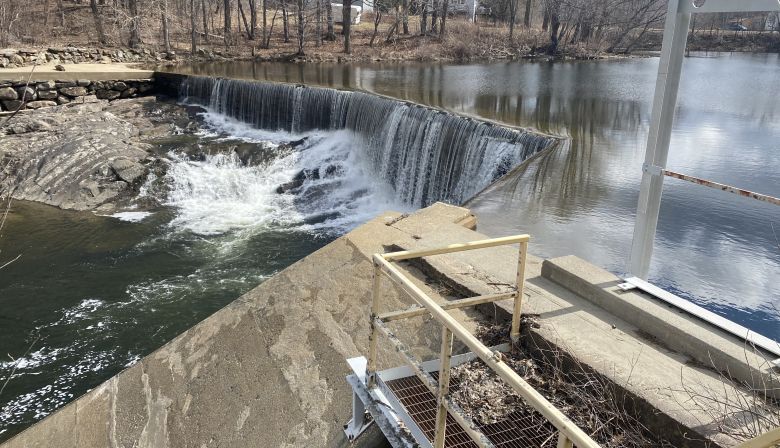
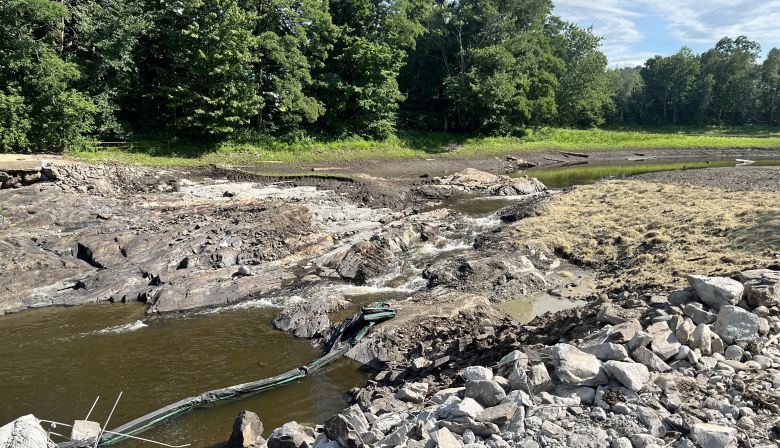
NOAA Fisheries Administrator, Janet Coit was in Maine last week and writes, in part, respecting her trip:
My trip was packed with unique experiences, including: … witnessing sturgeon breaching on the Kennebec River, touring a construction site where a dam is being remove in Farmington, and checking out the wild Atlantic salmon living in the cold water habitat of the Sandy River. What a thrill!
Janet and Maranda Nemeth became fast friends at Walton’s Mill Dam (pictured below). To learn more about NOAA Fisheries and Janet Coit’s work, visit their website HERE.
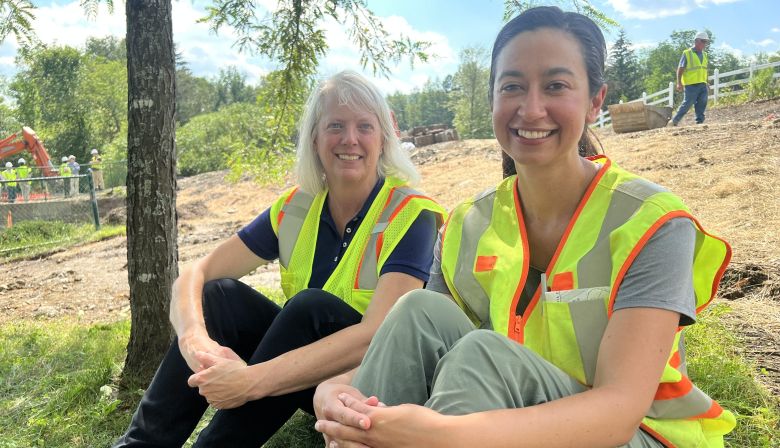
Penobscot & Kennebec
Maranda Nemeth comments on DMR’s report below:
For both the Penobscot and Kennebec River in Maine, this season is the strongest run of Atlantic salmon we have seen in over a decade. This is a very promising and encouraging sign of our work across the habitat range.
DMR’s Jason Valliere writes on July 22nd, 2022:
Our hot summer weather is here. River temperatures have been running 25-27C (77-81F). Amazingly fish still seem to be moving. We are still seeing some shad and salmon in these high temperatures. The fishway is open and fish can exit freely. Counts are being conducted via video when the hopper dumps out.
Of the 1,251 adult salmon captured/passed thus far approximately 245 of them were grilse (20%).
Let’s all hope for some rain and unseasonably cold temperatures looking forward throughout the rest of the summer.
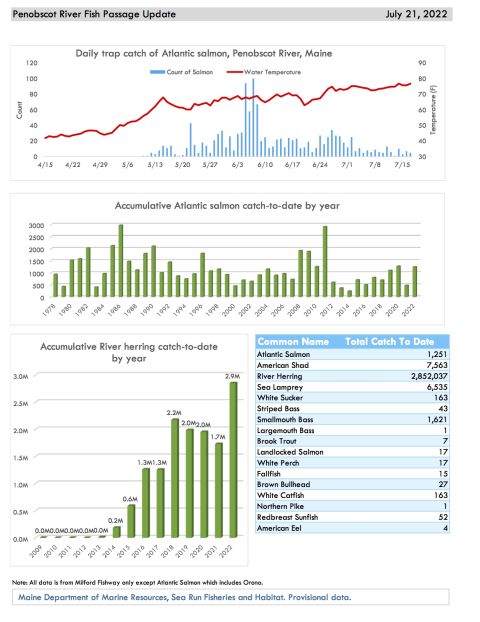
Lower mainstem Kennebec
DMR’s Jennifer Noll provided the following update on July 23rd, 2022:
Temperatures at the Lockwood fish lift have been ~24°C on average all week. The fish lift has been operating on a limited basis due to temperature restrictions. I’m happy to report that we’ve had an increase in flows on both the Kennebec River (hitting 12,000cfs on 7/21) and the Sandy River (>600cfs in Mercer).(USGS current conditions). No new Atlantic salmon have been captured at Lockwood fishlift this week.
This year, returning multi sea-winter (MSW) adult salmon will be tagged with acoustic tags. The goal of this tagging study is to understand movement ecology and habitat use by natural-origin and hatchery salmon, thermal refuge use, and identification of spawning habitat. So far 17 returning MSW salmon have been tagged and released in the Sandy River. Seven acoustic receivers were set throughout the Sandy River drainage on Thursday/Friday of the following week. Two more receivers are planned to be deployed in the Sandy River next week.
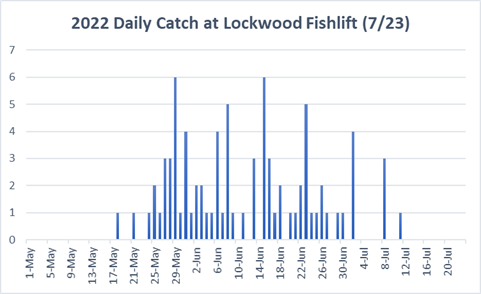
Figure above: Daily Atlantic salmon catch at Lockwood Fishlift, Waterville, ME. Daily catches range from 0-6 salmon/day.

Lockwood fish lift – total catches for 2022: 81 Atlantic salmon
Benton Falls – total catches for 2022: 5 Atlantic salmon
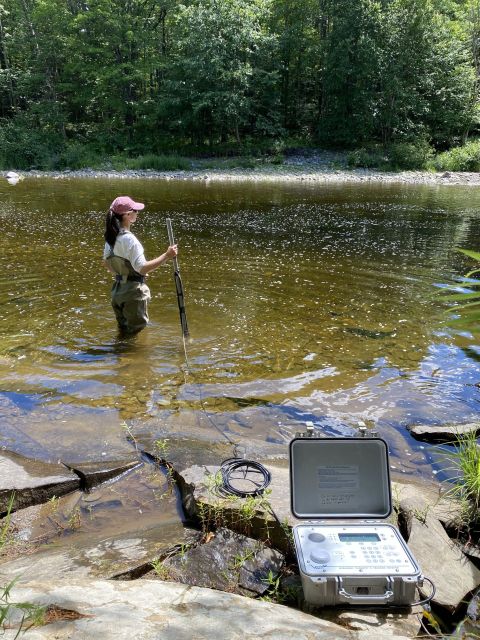
DMR’s Mark Pasterczyk provided the following update on July 23rd, 2022:
Here are the fish count numbers from Brunswick Fishway for the week of Monday 7/11/22 through Sunday 7/17/22:
Atlantic Salmon: Week’s total of 1 passed upstream which brings the season total to 17 passed upstream.
The one salmon passed upstream this week at BFW was of MSW size. It passed upstream at 4:35 PM on Tuesday (7/12/22).
Smallmouth Bass: Several Smallmouth Bass of various sizes have been back and forth in front of the window area all week. They have had plenty of opportunity each day to go upstream but they seem to like the area in front of the windows. This week, we had a net total of a bass or 2 coming back downstream. Season total of 161 SMB’s passed upstream.
The water temperature was at 25.2 degrees Celsius at 5:00 pm today (7/17/22).
Brunswick fish lift (mainstem Androscoggin) total catches for 2022: 17 Atlantic salmon
Please be informed that according to the warm water protocol in place for the Miramichi River system, 29 salmon pools across the system will be closed to ALL angling due to hot water conditions. For more information and the complete list of the Miramichi River pools closed during warm water protocol, please refer to the Recreational Fisheries Notice issued by DFO.
Brad Burn’s most recent Miramichi Atlantic Salmon Report notes:
The water height on the Blackville gauge is .8 meters and falling. The water temperature at Trout Brook on NWM was 19.5C/67F on the morning of July 27th and it has been rising to the mid 20Cs during the afternoons.
In addition, Brad shares:
Until we get back to water temperatures that are below 68F/20C for two consecutive days, and there is a forecast likelihood for that to continue, the pools will remain closed. Given the current weather forecast, we will be in this condition for some time to come. This happens every summer at some point on the Miramichi, and closing it to the stressors of fishing over these fish is a good thing. I look at it as the price we pay for having one of the longest salmon fishing seasons in North America.
To report poaching, which includes netting and snagging of salmon, please call: 1 (506) 857-6328.
Kris Hunter, ASF’s Regional Director for Wild Salmon Watersheds & Program Director for PEI, along with RiverNotes Editor & NS Program Director, Deirdre Green visited the Margaree and Chéticamp Rivers to see how the rivers were doing and speak with local salmon associations. Kris writes:
It sounds like the early runs on both rivers have been going well and that there are a good number of fish in the Margaree. Certainly we saw a good number of anglers out and about. As with many other rivers in our region this time of year, waters are getting warmer and lower. Please remember to keep a close eye on the temperatures and adjust accordingly as fish get stressed more easily in warmer waters.
In addition to seeing the rivers, we took the opportunity to speak with the Chéticamp River Salmon Association (CRSA) and the Margaree Salmon Association about the good work they are doing and the issues they are addressing. We discussed ASF’s new holistic Wild Salmon Watersheds Conservation program and how collaboration on a such a broad scale conservation initiative can help salmon, and help them to address their needs and work on their long-term vision for their respective watersheds.
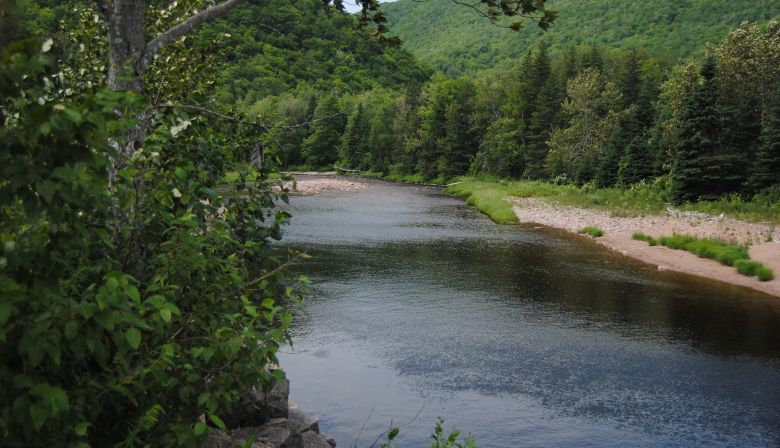
The New Fly Fisher, an educational television and online video series was recently filming on the Margaree River. Filming happened to coincide with a Women’s Fly Fishing Instructional Weekend hosted by fishing guide, Gioia Usher.
To read more about the upcoming episode that will feature local angling talent and the beautiful Margaree River, check out the news article on Saltwire HERE, and be sure to follow The New Fly Fisheron Facebook, YouTube and Instagram.
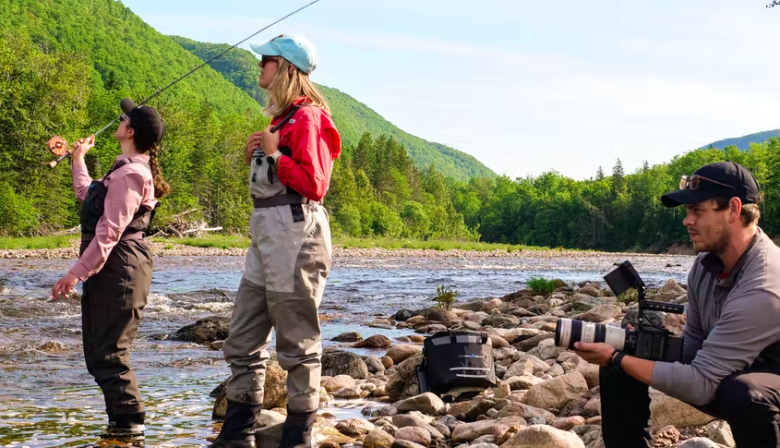
Researchers say 26 rare species inside proposed wilderness area
Identified in 2020 as a proposed wilderness area by the former Liberal government, Archibald Lake and its surrounding forest have been marked as having “high conservation value”. Yet, to date, no decision has been made, even after extensive public consultation.
CBC News released an article this morning that features comments from Chris Miller, Executive Director of the NS chapter of the Canadian Parks and Wilderness Society (CPAWS):
Chris Miller says the proposed Archibald Lake wilderness area is an “ecological hotspot” and he and others have produced a report to make the point that the provincial government must grant legal protection to the land.
Miller and others did fieldwork over a period of months during different seasons across the 684 hectares of land in Guysborough County near the St. Marys River. The purpose of the fieldwork was to fill gaps in information about species in the proposed wilderness area, he said.
“I’ve done a lot of fieldwork in Nova Scotia and, I have to say, Archibald Lake really stands out,” said Miller, executive director of the Nova Scotia chapter of the Canadian Parks and Wilderness Society.
“The old growth forest and the rare species there are truly spectacular,” he said.
To read CBC’s Michael Gorman’s full article click HERE, and follow Chris Miller onTwitter.
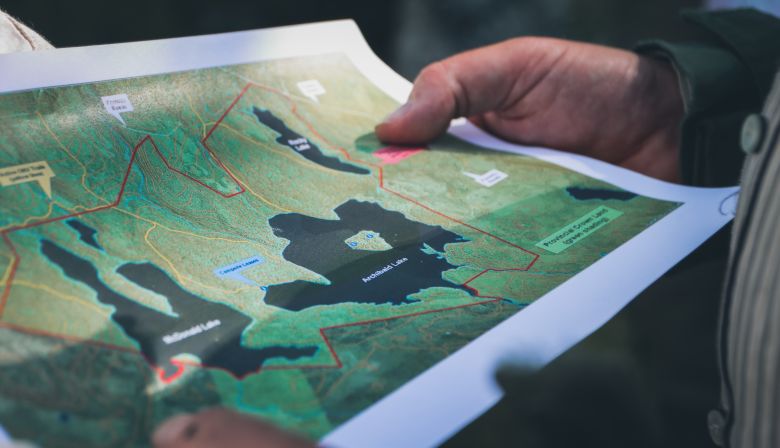
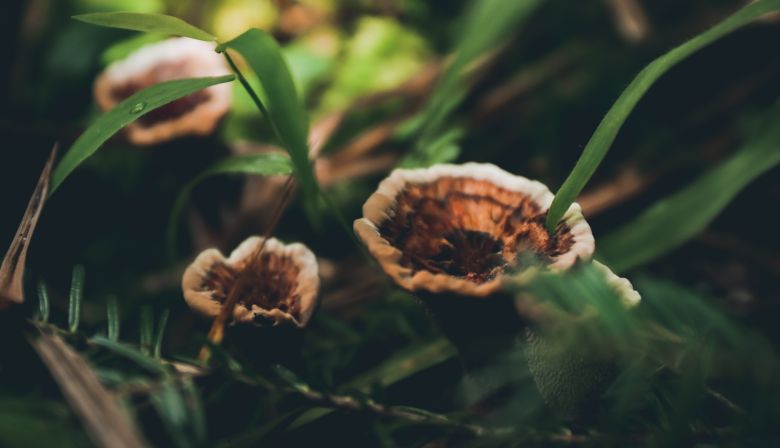
Water conditions were great through the first half of July, but have since taken a turn and the warm water protocol is in place for the Margaree River beginning on Wednesday, July 27th. This will close the portion of the river downstream from Doyle’s Bridge and the Southwest Margaree. While the upper section remains open, anglers are reminded to be cautious and monitor water temperatures.
In mid-July, water temperatures remained cool which made for happy salmon. Fish were scattered throughout the river which was a welcome contrast to what we’ve seen over the past few years. I was fortunate to spend two days with my wife in Cape Breton chasing Atlantic’s. As a novice fly fisher, she preferred the quiet beauty of the landscape with few spectators, so we bounced around the upper river with great friends and panoramic views.
With temperatures becoming dangerously high, it’s time to put away our salmon gear and be grateful for the early summer season. It’s time to wet wade along sandy beaches and chase striped bass on the Northumberland Strait.
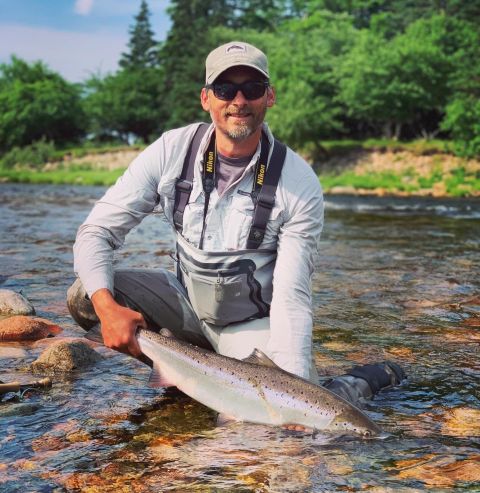

Effective July 27, 2022 at 16:00 until December 31, 2022, it is prohibited to angle for any species of fish in the following portions of the Margaree River:
– From the East Margaree highway bridges upstream to the Cabot Trail Bridge (also known as Creamery Bridge) on the Southwest Margaree River and upstream to Doyles Bridge on the Northeast Margaree River, and the Gallant River upstream from its confluence with the Margaree River to the highway bridge on the East Margaree Road; and
– The Southwest Margaree upstream from the Cabot Trail Bridge (Creamery Bridge) to the Scottsville Bridge.
For more information see the complete Variation Order MAR-VAR-2022-093 issued by DFO yesterday.
Family vacations to PEI don’t always leave much time for fishing, but I always manage to sneak in a little me-time before everyone is up and about for the day. I set out in the early morning to the closest river to our AirBnB, which happened to be the renowned Bonshaw River in the central part of the Island. The waters on PEI are largely spring-fed, and so even during the dog days of summer, you can find happy and healthy trout sipping bugs and chasing streamers.
On this particular day, I ventured farther upstream than ever before, and was rewarded with the sight of fishing taking flies on the surface. The surroundings were tough for casting, with tall grass and trees, but I managed to connect with a couple of beautiful rainbow trout. On my way down to my parking spot, I fished a streamer, and managed several happy little brook trout, and even a salmon smolt. There is no more rewarding way to start the day on a weekend getaway.
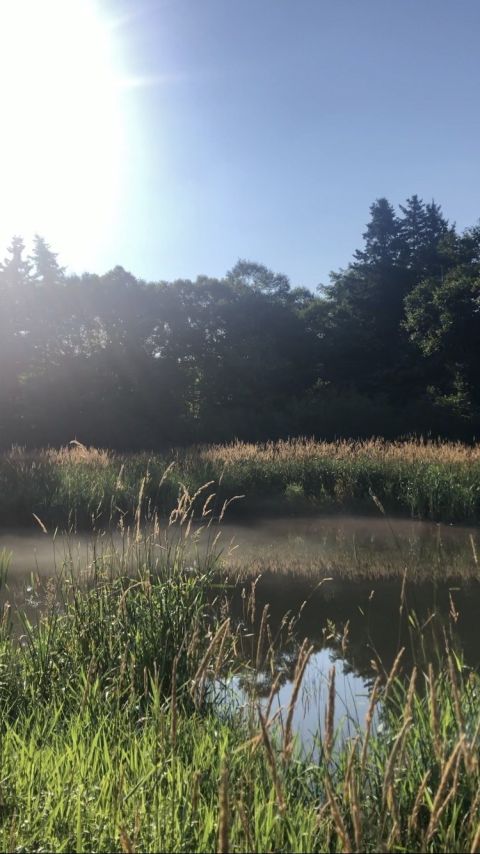
North River Restoration
Karalee McAskill, Watershed Co-ordinator and Field Technician for the Cornwall & Area Watershed Group (CAWG) shares:
We are completing a fish passage restoration project on the North River, a local salmon river just outside of Charlottetown, Prince Edward Island’s capital city.
The project entailed retrieving and removing a large flatbed truck frame from the river. Our summer crew electrofished the site before the project began and they caught salmon there, so we’re hoping with the restoration complete we will see habitat improve and those salmon numbers improve.
This project could not take place without the funding received from the Atlantic Salmon Conservation Fund. We are very appreciative for their support and we look forward to sharing photos of our completed work.
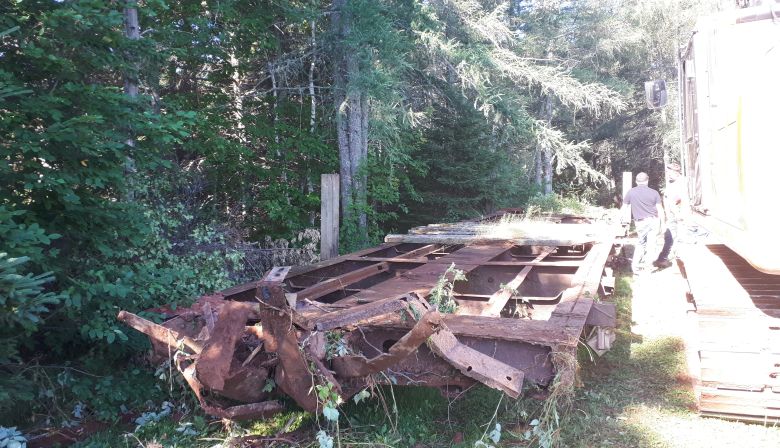
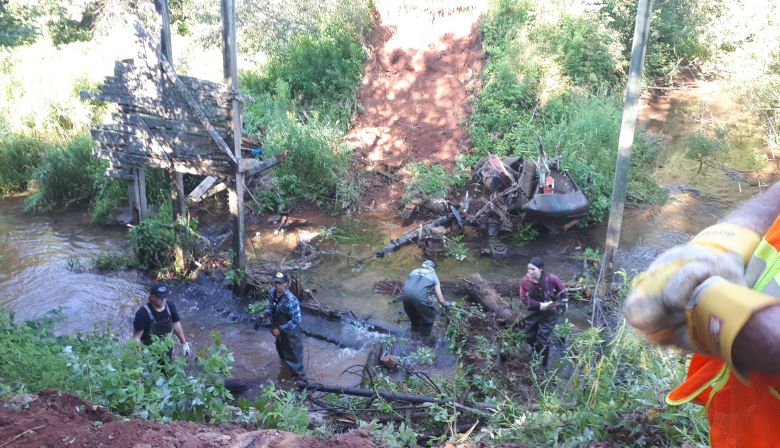
Jusqu’à ce jour, la majorité des rivières dénombre une augmentation importante de saumon et une diminution au niveau des madeleineaux. Au moment de la création de ce rapport, les niveaux d’eau demeurent bas sur la plupart des rivières avec quelques exceptions.
C’est la période de la saison où les décomptes en rivière sont effectués pour déterminer l’abondance qui pourrait éventuellement permettre la récolte de grand saumon sur certaines rivières à partir du 1er août, comme stipulé dans le plan de gestion du saumon atlantique.
Pendant les périodes d’eau plus chaude, veuillez svp réduire au minimum la durée du combat si vous piquez un saumon et veuillez les garder dans l’eau pendant tout le processus d’une remise à l’eau. Il n’y a pas de temps prédéfini pour relâcher un poisson, il vous fera signe lorsqu’il est prêt à partir.
Rappel aux saumoniers pêchant les rivières du Québec, prenez le temps de signalé vos prises et remise à l’eau afin d’avoir des statistiques précises et pour que les gestionnaires de rivière puissent calculer le succès de pêche avec précision.
Tight Lines!
** Les données utilisées dans ce rapport proviennent de divers sites Web, médias sociaux et des sources du gouvernement du Québec.

La Zec Bonaventure nous informe que le décompte mi-saison est complété, 1 422 saumons et 393 madeleineaux et 16 Bars Rayé ont été répertoriés.
Jusqu’au 23 juillet 2022, la déclaration de 754 saumons remis à l’eau et la récolte de 255 madeleineaux furent enregistrées par l‘APSB (Association des pêcheurs sportifs de la Bonaventure) pour un total de 1 009 prises.
Cumulativement au 24 juillet 2021, les saumoniers de la Bonaventure avaient déclaré 823 prises dont 508 saumons remis à l’eau et la récolte de 315 madeleineaux.
En date du 25 juillet 2020, 465 saumons étaient déclarés remis à l’eau et la récolte de 233 madeleineaux.
Rivière Sainte-Anne
En date de cette semaine, les conditions de visibilité ont empêché un décompte adéquat de la rivière. La remise a l’eau des grands saumons continuera jusqu’à la fin de la saison 2022. Les biologistes on put apercevoir 452 saumons et 169 madeleineaux totalisant 621 poissons.
L’année dernière, Destinations Chic-Chocs avait publié le résultat du décompte effectué le 24 et 25 juillet. 571 saumons et 379 madeleineaux ont été observés et comptés totalisant 960 poissons.
Pendant la saison 2020, et d’après le bilan de l’exploitation du saumon au Québec, une montaison totale de 1 135 poissons, dont 780 saumons et 355 madeleineaux, avait eu lieu.
Rivières York, Dartmouth, St-Jean
Pour la période se terminant le19 juillet, la Zec Gaspé a publié les statistiques cumulatives suivantes :
York : 418 captures (incluant les remises à l’eau) 3 294 jours-pêche
Dartmouth : 180 captures (incluant les remises à l’eau) 1 023 jours-pêche
Saint-Jean : 121 captures (incluant les remises à l’eau) 405 jours-pêche
Pour enregistrer une remise à l’eau, visiter le https://saumongaspe.com/riviere-york/declaration-de-remise-a-leau.html.
Rivière Matane
En date du 26 juillet 2022, depuis le début de la saison, 1 084 saumons et 865 madeleineaux ont été dénombrés par le biais de la passe migratoire pour un total de 1 949. A pareille date, les pêcheurs sportifs ont déclaré 313 prises, dont 139 saumons et 44 madeleineaux remis à l’eau et la récolte de 130 madeleineaux.
Du 15 juin 2021 jusqu’au 27 juillet, 751 saumons et 1 021 madeleineaux avaient franchi la passe migratoire pour un total de 1 772. La SOGERM indiquait que 404 prises (121 saumons et 283 madeleineaux) ont été enregistrées dont 121 saumons et 86 madeleineaux relâchés en plus de 197 madeleineaux récoltés.
Au 27 juillet 2020, 1 515 poissons dont 1 057 saumons et 458 madeleineaux avaient cumulativement franchi la passe migratoire.
Rivière Matapédia
Le dénombrement en rivière est en cours pour évaluer si une abondance suffisante existe afin de permettre la récolte de grands saumons. Les résultats n’ont pas encore été partagés.
Jusqu’au 26 juillet 2022, les pêcheurs sportifs ont déclaré la prise de 459 poissons, dont 312 saumons remis à l’eau et la récolte de 147 madeleineaux.
Au 27 juillet pendant la saison 2021, 415 prises (262 saumons remis à l’eau et 153 madeleineaux récoltés) ont été enregistrées par les pêcheurs sportifs.
Cumulativement au 26 juillet 2020, 632 prises furent déclarées, dont 468 saumons relâchés et 164 madeleineaux récoltés.
Rivière Mitis
En date du 26 juillet, 1 433 poissons, dont 1 029 saumons et 404 madeleineaux ont franchi le piège de capture.
Jusqu’au 28 juillet 2021, la montaison de la Mitis se chiffrait à 1 682 poissons, dont 730 saumons et 952 madeleineaux.
Au 28 juillet 2020, 1 228 poissons furent transportés en aval du site de capture, dont 643 grands saumons et 585 madeleineaux.
Rivière aux Rochers
En date du 24 juillet, 520 saumons et 100 madeleineaux ont furent dénombrés par le biais du piège de comptage pour un total de 620. Également, les pêcheurs sportifs ont déclaré 263 captures dont 220 saumons et 14 madeleineaux remis a l’eau et la récolte de 29 madeleineaux.
Comparativement au 26 juillet 2021, 515 poissons avaient franchi le piège (220 saumons et 295 madeleineaux) qui était un bon signe comparativement à la montaison totale de 2020 lorsque 361 poissons furent comptés.
Jusqu’à la même date en 2021, les captures sportives se chiffrait à 173 dont 97 saumons et 32 madeleineaux remis à l’eau et 54 madeleineaux récoltés. 113 poissons ont été capturés en 2020 dont 97 remises à l’eau.
Rivière Rimouski
En date du 26 juillet 2022, 348 saumons et 198 madeleineaux ont franchi le piège au pied du barrage pour un total de 546. Les pêcheurs sportifs ont déclaré 124 prises, dont 96 remises a l’eau et la récolte de 28 madeleineaux.
Au 27 juillet 2021, 575 poissons (231 saumons et 343 madeleineaux) étaient dénombrés au piège de capture et les pêcheurs sportifs déclaraient la capture de 135 saumons, dont 58 remises à l’eau et 77 madeleineaux récoltés jusqu’à ce jour.
Cumulativement au 27 juillet 2020, 325 poissons ont été comptés (183 saumons et 142 madeleineaux) et transportés en amont de la chute infranchissable.
Au 27 juillet 2020, les résultats de pêche cumulatifs indiquaient que 43 prises avaient été déclarées, soit 24 saumons relâchés et 21 madeleineaux récoltés.
Rivière Madeleine
Depuis l’ouverture de la passe migratoire le 17 juin, 1 451 poissons (927 saumons et 524 madeleineaux) ont dénombré par le biais de la passe migratoire.
En date du 27 juillet 2021, on dénombrait 612 saumons et 654 madeleineaux totalisant 1 266 poissons ayant franchi la passe.
A pareille date en 2020, 703 saumons et 527 madeleineaux avaient été compté totalisant 1 230.
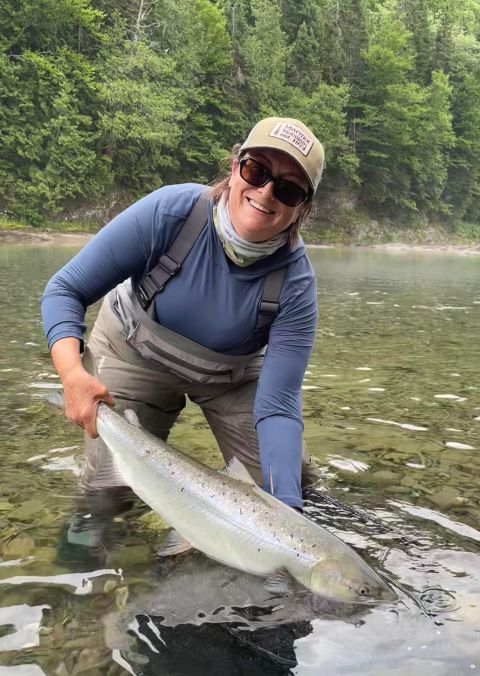
At the printing of this report, water levels on most rivers are low but on the brighter side of the ledger, most rivers are reporting a marked increase in the number of salmon to date this season.
The Ministry of Forests, Wildlife and Parks (MFFP)will soon publish a press release identifying which rivers have reached sufficient abundance to permit a harvest of large salmon as of August 1st as stipulated in the 2016-2026 Atlantic salmon management plan.
Reminder to anglers fishing Quebec Rivers, take the time to report your releases to have the most accurate angling statistics and for the river managers to accurately calculate angling success.
Also, during warmer water conditions, please keep the amount of time your fish is on the line to a minimum (if you can hook up) and please keep them in the water during the entire release process. There is no pre-set amount of time prescribed to release a fish, it will tell you when it is ready to go.
** Data used in the Quebec River notes are sourced from various river websites, social media, and Quebec government sources. Information can change without prior notification regarding prior year comparative figures.

The Bonaventure ZEC has published the results of the mid-season assessment. The team counted 1,422 salmon, 393 grilse and 16 Striped Bass.
The latest statistics to July 23rd, 2022, cumulatively indicate 1,009 landed which includes 754 releases and 255 grilse harvested.
To July 24th, 2021, sport anglers had reported landing 823 fish (508 salmon released and 315 grilse harvested).
As of July 25th, 2020, 698 fish were reported landed by anglers including 465 salmon released and 233 grilse were harvested.
Sainte-Anne River
As of this week, conditions on the river did not permit a complete assessment. Therefore, mandatory live release of salmon will continue until September 30th. The partial count done by the biologists revealed the presence of 452 salmon and 169 grilse for a total of 621.
In 2021, the mid-season assessment was completed on July 25th. 571 salmon and 379 grilse were observed and counted for a total of 960. In 2020, for the entire season, 1,135 fish had migrated to the river which was comprised of 780 salmon and 355 grilse.
York, Dartmouth, St-Jean Rivers
Cumulative statistics to July 19th have been published by the Gaspé Zec and are as follows:
York: 418 captures (includes releases) 3 294 rod-days
Dartmouth: 180 captures (includes releases) 1 023 rod-days
Saint-Jean: 121 captures (includes releases) 405 rod-days
Matane River
As of July 26th, 2022, since the opening of the fish way on June 15th, 1,084 salmon and 865 grilse have been counted for a total of 1,949. Anglers have also reported landing 313 fish including 139 salmon and 44 grilse released as well as 130 grilse harvested.
From June 15th to July 27th, 2021, 751 salmon and 1 021 grilse had been counted for a total of 1,772. Cumulatively to that date, 404 fish had been reported landed which included 121 salmon and eighty-six grilse released as well as 197 grilse harvested.
To July 20th, 2020, 1 515 fish (1 057 salmon and 458 grilse and to July 28th had migrated through the fishway.
In 2020, as of July 27th, a total of 278 fish were reported landed (159 salmon et 25 grilse released, 94 grilse harvested).
Matapedia River
Results of the in-river assessment are not currently available.
To July 26th, 2022, for the season, a total of 459 fish are reported landed (312 salmon released and 147 grilse harvested).
In 2021, to July 27th, for the season, 415 captures (262 salmon released and 153 grilse harvested) were reported by sport anglers.
Cumulatively to July 26th, 2020, 632 fish had been reported landed made up of 468 salmon released and 164 grilse harvested.
Mitis River
The particularly good migration continues for the Mitis this season to July 26th, 1,433 fish (1,029 salmon and 404 grilse) have been counted.
To July 28th, 2021, 1,682 fish had entered the fish trap including 730 salmon and 952 grilse.
1,228 fish had been transported to continue their migration (643 salmon and 585 grilse) to July 28th, 2020.
Aux Rochers River
This North Shore River is having an exceptionally good season to date. As of July 24th, 520 salmon and 100 grilse have entered the fish trap for a total of 620 fish. Anglers have reported landing 263 fish made up of 220 salmon and 14 grilse released, 29 grilse harvested.
To July 26th, 2021, 515 fish had been counted, (220 salmon and 295 grilse) a good result when compared to the 2020 results for the entire season when 361 fish had been counted (212 salmon and 149 grilse).
Anglers reported landing 173 fish to same date made up of 97 salmon and 32 grilse released as well as 54 grilse harvested. 113 fish were landed during the entire 2020 season which include 97 releases.
Rimouski River
Cumulatively to July 26th, 348 salmon and 198 grilse have been counted for a total of 546. The Rimouski salmon anglers have reported landing a total of 124 fish made up of 96 releases and the harvest of 28 grilse.
Since the start of the angling season to July 27th, 2021, 231 salmon and 343 grilse had been counted for a total of 575.
Records to July 27, 2020, indicated 325 fish (183 salmon and 142 grilse) have been counted and transported above.
Madeleine River
Since opening day on June 17th, to July 26th, 927 salmon and 524 grilse have been counted through the fishway for a total of 1,451.
To July 27th, 2021, 612 salmon and 654 grilse had been counted for a total of 1,266.
In 2020, at the same date, 703 salmon and 527 grilse were counted cumulatively totalling 1,230.

Mitchell considers themselves extremely fortunate to have been mentored by a close family friend, and to have learned the ins and outs of salmon fishing and two-handed casting from such an experienced angler. In the pursuit of sharing their passion with others, Mitchell has taken up the role of Nova Scotia guide and Spey casting instructor.
If you bump into Mitchell on your journey on the water, say hello! With an affinity for teaching, they share their passion for casting, fishing and fly tying with like-minded people. Their love for fly fishing and tying is contagious and they are supportive of anyone keen to give it a try.
Follow Mitchell on Instagram @lifebetweenlines to see more beautifully tied flies and fishing adventures.
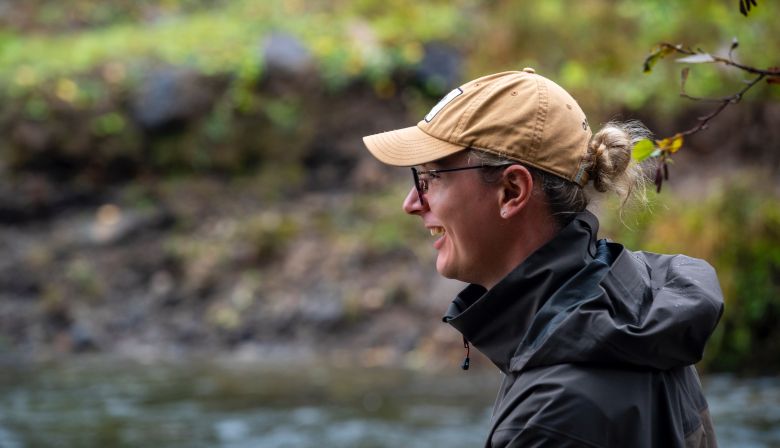
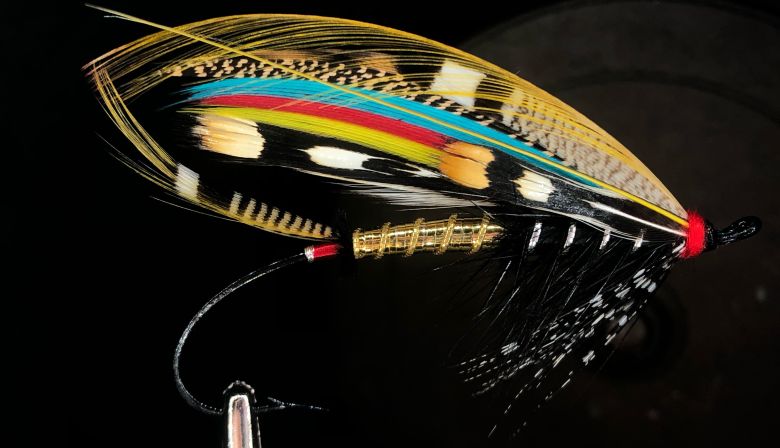
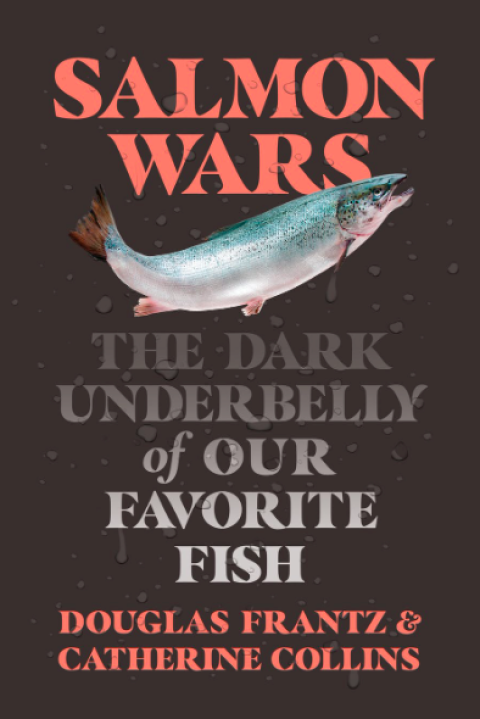
Pulitzer Prize winner Douglas Frantz and former journalist and investigator Catherine Collins have garnered plenty of praise for their searing indictment of the open net-pen industry.
ASF president Bill Taylor says, “Salmon Wars will change the way people look at the supermarket seafood counter. Frantz and Collins pierce the pastoral facade of Big Salmon and show what’s really happening under the water.”
In a special guest blog post on asf.ca Frantz and Collins describe how they became interested in salmon aquaculture and reveal some of the most startling discoveries of their research.
Read the blog here.
Read an excerpt here: Book Details – Salmon Wars
To learn more about authors and the book, see the article featured here: TIME – 3 Reasons to Avoid Farmed Salmon
Salmon Wars is available for purchase on Amazon (Canada) and Amazon (U.S.).

For the second time in as many weeks DFO has announced more rivers will be restricted to early morning fishing only, due to environmental conditions (i.e. warm water temperatures / low water levels). Further details on these rivers closures may be found on the links supplied below:
This is the second season in a row that rivers on the Island of Newfoundland, in both the Central and Northeast coast areas, have experienced extended periods of low water levels and warm water temperatures.
Meanwhile, nearly every other region of the province of NL (including Labrador) experienced heavy rain last week that caused water levels to rise significantly. In fact, many rivers reached flood conditions. On the Island, these water levels have since receded and most rivers are now at medium levels. However, hot weather conditions have caused water temperatures to rise on most rivers on the Island, and as such, while there are still good reports of fish being seen by anglers, the fishing has been slow. In Labrador, water levels on most rivers are currently still on the high side, and combined with dull weather conditions and cooler nights, water temperatures on most Labrador rivers are still on the cool side. Consequently, anglers in Labrador are still enjoying good fishing on most rivers and are reporting good signs of fish.
Regional Round Up:
Southwestern Newfoundland – Heavy rain on July 19th, sent water levels on most Bay St. George rivers from low to flood condition. Since then water levels have receded and are now at medium levels. As the water levels fell anglers were still seeing good signs of fish but due to warm water temperatures fishing was a little slow. Angler, Gary Robar hooked a nice grilse on Harry’s River on July 22nd. Also, guide, Eric Bennett, reports medium water levels on Southwest Brook and Bottom Brook, where his client rose several fish but because of warm waters did not get any takers.
Western Newfoundland – Water levels were good on the lower Humber River last week and water temperatures ranged from 14-18 degrees Celsius. Reports indicate that a few fish were being hooked in this area, including a large fish released by angler Lenny Boone. On the upper Humber River at Big Falls, water levels were good but water temperatures were warm and there were few fish around, resulting in very slow fishing with only an odd fish being hooked.
Northern Peninsula – Water levels were fairly good on Main River (Sops Arm) early last week and there was still a good sign of fish moving through the system. In fact Steve Sutton reports having good fishing on the river for a couple of days. However, heavy rain on July 22nd , sent the river into flood condition bring all angling to a stand still.. Since then, water levels have receded and are now at normal flows. Water levels and water temperatures were much better on rivers further up the Northern Peninsula. Angler, Frank Sears, reports he enjoyed good fishing on the Torrent River and Big East River during his week-long trip to that area last week.
Central Newfoundland – Rivers in this region of the province did not get the heavy rain last week that was experienced in most other areas of the province. As a result, water levels remain very low on rivers in this area and water temperatures have been warm. As such fishing has been very slow in this area. However, there were still good signs of fish moving through the lower Gander River and a few fish were still being hooked. Angler, Toby Peddle, reports he hooked a couple of grilse in this area on July 22nd. On the Terra Nova River, angler Jr. Ken reports very slow fishing last week due to low water and warm water temperatures.
On the Exploits River water levels were a little better because they are controlled for hydro purposes. Angler Tony Higgins reports that there were still fish moving through the system but because of warm water temperatures fish were hard to fly.
Avalon Peninsula – Rivers in this area also received rain last week and as a result most rivers are in good shape. However, angling as been a little slow as most runs have already peaked most fish have gone through.
Labrador – According to long time guide, Lester Butt, the water level on the Forteau is still a little high due to consistent rain, and the water temperature is still cool. He also reports there is still a good sign of salmon in the river and angling has been pretty good this past week. In addition he reports that the sea-trout is now entering the river as well. Rob French, Big Land Adventure Lodge on the Pinware River, reports that his guests enjoyed good fishing last week and there are still good signs of fish in the river. They did get some rain last week which caused the river to rise a little but currently water levels have receded a little and are excellent for fishing.
Meanwhile, Dwight Lethbridge, Pratt Falls Outfitters, reports that they received heavy rain on the Eagle River last week and as a result the river rose substantially. While this hindered fishing to some degree there were still good signs of fish moving through the system and their guests still hooked a few fish.
Interesting Events:
Late this past winter there were reports of dead sea birds showing up in a few different places along the coast of Newfoundland. At the time it was suspected by officials that these deaths were probably caused by a lack of food. However, this summer there have been more reports of dead sea birds showing up at various locations throughout Newfoundland, and some of these deaths were confirmed to be the result of the avian flu virus.
This virus has been spreading to eastern Canada over the past few years, and now apparently has arrived in Newfoundland. Incidentally, this past week there was a scientific report released out of Quebec, confirming that a number of dead harbour seals in that province were found to be infected by the avian flu, which may have been the primary cause of their deaths (see CBC story HERE).
Generally speaking, many people believe seal populations have grown substantially in recent years and are out of balance with nature. It is a well-known fact that when any species becomes overpopulated they become stressed and are more susceptible to stress factors, including diseases. This is natures way of reducing such overpopulated species.
It is unfortunate that the avian flu is spreading throughout eastern Canada and may have impacts on seals and other species in other eastern provinces. On the other hand, as the old saying goes, “even an ill wind brings some good’. Less seals would certainly be beneficial to many other struggling species such as, cod, herring, capelin and so forth. Who knows, perhaps it might be good for salmon too. But I digress…perhaps this is just speculation on my part, or hopeful thinking. I think you would agree though, this is an interesting subject.
